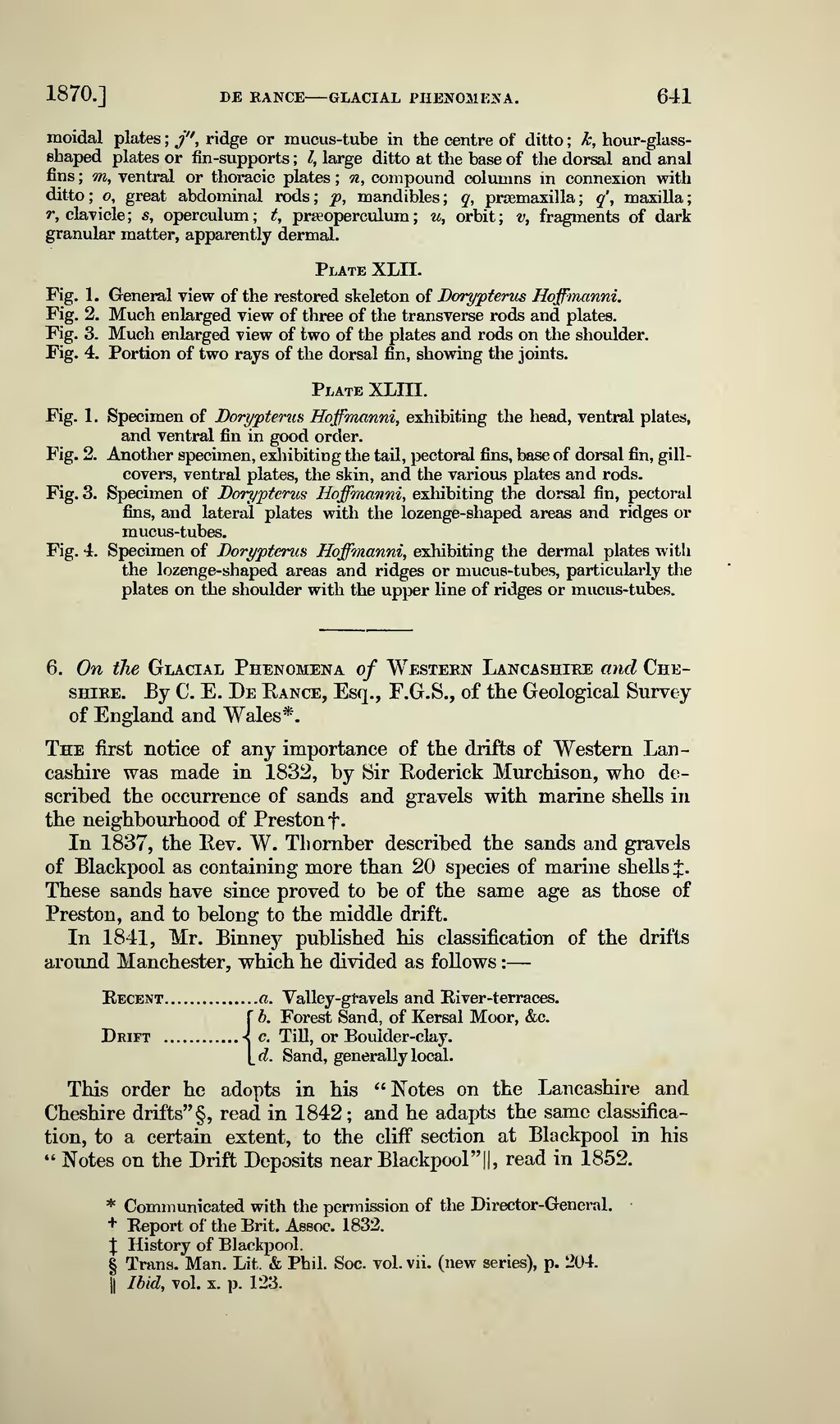moidal plates ; j", ridge or mucus-tube in the centre of ditto ; k, hour-glass- shaped plates or fin-supports ; l, large ditto at the base of the dorsal and anal fins ; m, ventral or thoracic plates ; n, compound columns in connexion with ditto ; o, great abdominal rods ; p, mandibles ; q, praemaxilla ; q', maxilla ; r, clavicle; s, operculum; t, praeoperculum ; u, orbit; v, fragments of dark granular matter, apparently dermal.
Plate XLII.
Fig. 1. General view of the restored skeleton of Dorypterus Hoffmanni. Fig. 2. Much enlarged view of three of the transverse rods and plates. Fig. 3. Much enlarged view of two of the plates and rods on the shoulder. Fig. 4. Portion of two rays of the dorsal fin, showing the joints.
Plate XLIII.
Fig. 1. Specimen of Dorypterus Hoffmanni, exhibiting the head, ventral plates, and ventral fin in good order.
Fig. 2. Another specimen, exhibiting the tail, pectoral fins, base of dorsal fin, gill- covers, ventral plates, the skin, and the various plates and rods.
Fig. 3. Specimen of Dorypterus Hoffmanni, exhibiting the dorsal fin, pectoral fins, and lateral plates with the lozenge-shaped areas and ridges or mucus-tubes.
Fig. 4. Specimen of Dorypterus Hoffrnanni, exhibiting the dermal plates with the lozenge-shaped areas and ridges or mucus-tubes, particularly the plates on the shoulder with the upper line of ridges or mucus-tubes.
6. On the Glacial Phenomena of Western Lancashire and Cheshire. By C. E. De Rance, Esq., F.G.S., of the Geological Survey of England and Wales*.
The first notice of any importance of the drifts of Western Lancashire was made in 1832, by Sir Roderick Murchison, who described the occurrence of sands and gravels with marine shells in the neighbourhood of Preston†.
In 1837, the Rev. W. Thornber described the sands and gravels of Blackpool as containing more than 20 species of marine shells‡. These sands have since proved to be of the same age as those of Preston, and to belong to the middle drift.
In 1841, Mr. Binney published his classification of the drifts around Manchester, which he divided as follows : —
Recent a. Valley-gravels and River-terraces.
b. Forest Sand, of Kersal Moor, &c.
Drift c. Till, or Boulder-clay.
d. Sand, generally local.
This order he adopts in his "Notes on the Lancashire and Cheshire drifts"§, read in 1842; and he adapts the same classification, to a certain extent, to the cliff section at Blackpool in his " Notes on the Drift Deposits near Blackpool"||, read in 1852.
- Communicated with the permission of the Director-General.
† Report of the Brit. Assoc. 1832. ‡ History of Blackpool. § Trans. Man. Lit, & Phil. Soc. vol. vii. (new series), p. 204. || Ibid, vol. x. p. 123.
